New Products
-
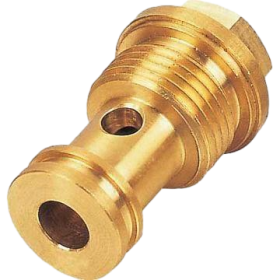
Custom Turn-Mill Combination brass parts
-
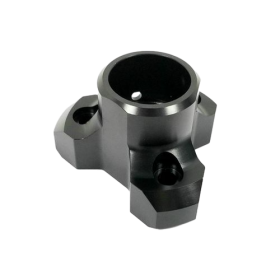
Custom Turn-Mill Combination parts
-
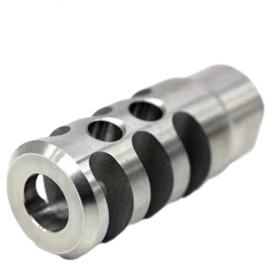
Precision CNC Turning Parts Stainless Steel shaft accessories
-
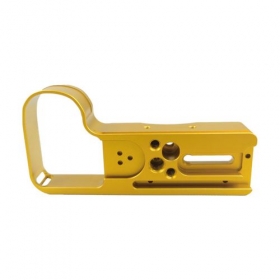
Precision CNC Custom Made Colorful Anodized Aluminum milling parts
-
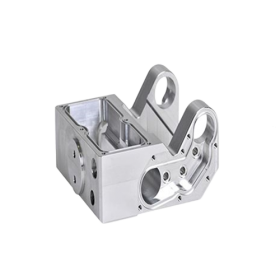
Custom CNC Milling Automated Machinery and Equipment Parts
-
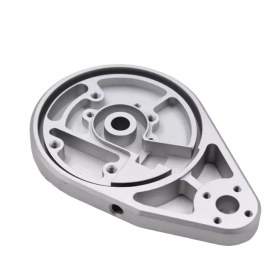
OEM/ODM Custom High Precision Metal CNC Machining/Milling/Turning Service CNC Turning Part
Electric Skateboard Metal Components at Bomei
In the high-octane world of electric skateboards, the metal components are the unsung heroes, silently shouldering the responsibility of delivering a seamless, powerful, and durable riding experience.
At Bomei, we pour our expertise and innovation into every piece, ensuring top-notch quality from design to finish. Let’s dissect these crucial metal components, understanding their specifications, materials, processing techniques, and surface treatments.
Motor Housing: The Protective Fortress of Electric Skateboard Motors
Specifications
Our motor housings come in an array of sizes, meticulously designed to cradle different motor models snugly. From compact enclosures for urban commuter motors like the 5065, which facilitate easy integration into sleek decks, to larger, more fortified housings for power-hungry 6374 motors, every dimension is optimized. Wall thickness is calibrated to strike a balance between strength and weight, fending off impacts and vibrations while keeping the skateboard agile. Mounting points align precisely with industry standards, ensuring a vibration-free and secure connection to motor mounts and decks.
Materials
We predominantly rely on aerospace-grade aluminum alloy. Its trifecta of benefits – lightweight nature for enhanced acceleration and handling, excellent heat dissipation to ward off overheating, and natural corrosion resistance against environmental elements – makes it an ideal choice. For extreme applications, carbon fiber composites step in, offering even lighter weight and superior rigidity, dampening vibrations for a whisper-quiet ride.
Processing Technique
CNC machining is the cornerstone of production. The initial blank is cut with high-powered routers, followed by milling for smooth surfaces and drilling for ventilation and mounting holes. Extrusion techniques are sometimes employed for complex profiles, optimizing strength distribution. After machining, a meticulous deburring and finishing process eradicates sharp edges. For carbon fiber housings, composite layup techniques under controlled pressure and temperature yield a durable final product.
Surface Treatment
Aluminum housings undergo anodizing, forming a dense oxide layer that exponentially boosts corrosion resistance and scratch protection. With a palette of color options, riders can customize their skateboard’s look. Carbon fiber composites get a clear coat or matte finish, shielding against UV damage and abrasions while maintaining an understated elegance.
Motor Mounts: Stable and Adjustable
Specifications
Our motor mounts are custom-designed to fit specific motor models and board geometries, ensuring a seamless fit. They are adjustable, allowing for precise alignment of the motors with the drivetrain components, and engineered to provide a secure and stable connection. The mounting holes and slots match the standard bolt patterns used in electric skateboard construction, making installation a breeze.
Materials
Typically, our motor mounts are crafted from lightweight yet robust materials such as aluminum or carbon fiber composites. Aluminum mounts offer a great strength-to-weight ratio and are relatively easy to machine. Carbon fiber composites, on the other hand, are even lighter and impart excellent rigidity, taming vibrations and elevating the overall performance of the skateboard.
Processing Technique
For aluminum mounts, CNC machining is our go-to method, enabling the creation of complex shapes and precise dimensions. The mounts are milled, drilled, and tapped to ensure accurate fitment of motors and other components. When it comes to carbon fiber mounts, we utilize composite layup techniques. Layers of carbon fiber fabric are impregnated with resin and cured under pressure to form the final shape.
Surface Treatment
Aluminum mounts may be anodized to fend off corrosion and sport a sleek finish. Anodizing also furnishes a hard, wear-resistant surface that can withstand the rigors of skateboarding. Carbon fiber mounts may have a clear coat or a matte finish applied to enhance their appearance and protect the fibers from UV damage and abrasion.
Wheel Hub: The Central Axis of Smooth Rolling
Specifications
Our wheel hubs are available in diverse diameters and widths, ranging from 50mm to 70mm in diameter and 20mm to 40mm in width, catering to various wheel sizes and riding styles. Precision-machined boreholes snugly fit common axle diameters like 8mm, 10mm, and 12mm, enabling easy component swapping. Some high-end models feature integrated cooling channels, efficiently dissipating heat generated during high-power rides.
Materials
High-strength aluminum alloys are our go-to due to their excellent strength-to-weight ratio, reducing overall weight and energy consumption. For extreme terrains and heavy-duty applications, titanium alloys are introduced, offering unmatched strength, hardness, and corrosion resistance. Sealed ball bearings made of chrome steel, precision-ground for smooth rotation, are housed within, protected by effective seals that keep out debris.
Processing Technique
CNC machining is the driving force behind hub manufacturing. Lathes and milling machines cut the initial blank accurately, followed by milling for intricate features and turning for a perfect axle and wheel fit. Deburring and polishing remove imperfections, while hubs with cooling channels undergo specialized drilling and milling. Bearings are installed using a hydraulic press for precise seating, and rigorous quality checks, including balance and rotational smoothness tests, are the final gatekeepers before dispatch.
Surface Treatment
Aluminum hubs are anodized, enhancing corrosion resistance and allowing for color customization. Titanium hubs receive nitride or ceramic coatings, upping surface hardness, reducing friction, and providing superior scratch and abrasion resistance, ensuring longevity and performance.
Mounting Brackets: The Steady Connectors
Specifications
Our mounting brackets are designed with precision to fit specific motor models and board geometries, ensuring a seamless connection. They feature accurately placed mounting holes and slots that match standard bolt patterns, facilitating easy assembly and disassembly. The brackets’ structural integrity is optimized to bear the weight and forces exerted during operation, preventing any unwanted movement or misalignment.
Materials
Aluminum and steel are the primary materials of choice. Aluminum offers a great strength-to-weight ratio, making it suitable for applications where weight reduction is crucial. Steel, on the other hand, provides superior strength and rigidity, ideal for heavy-duty setups. The material selection is based on the specific requirements of the skateboard and the rider’s preferences.
Processing Technique
For aluminum brackets, CNC machining is the mainstay, allowing for the creation of complex shapes and precise dimensions. The brackets are milled, drilled, and tapped to ensure accurate fitment of components. Steel brackets are fabricated through a combination of cutting, welding, and bending processes, with advanced welding techniques ensuring strong and reliable joints.
Surface Treatment
Aluminum brackets may be anodized to protect against corrosion and achieve a sleek finish, adding to the overall aesthetics of the skateboard. Steel brackets can be plated with zinc or chrome for enhanced rust protection and a polished appearance, ensuring they remain durable and visually appealing over time.
Truck Parts: The Foundation of Handling
Specifications
Our truck parts line-up includes axles, bushings, and baseplates, each designed to work in harmony. The axles come in different lengths and diameters to accommodate various wheel sizes and board widths. The bushings are available in different durometers, allowing riders to fine-tune the turning characteristics of the skateboard. The baseplates are engineered to provide a stable connection between the trucks and the skateboard deck.
Materials
Axles are usually made of hardened steel or titanium. Hardened steel axles offer high strength and durability, while titanium axles are lighter and boast excellent corrosion resistance. Bushings are made of polyurethane, mirroring the material choice for skateboard wheels, as it offers good flexibility and shock absorption. Baseplates are typically made of aluminum or magnesium alloys for their lightweight and strong properties.
Processing Technique
Axles are machined using precision grinding and turning processes to achieve the required smoothness and dimensional accuracy. Hardened steel axles may undergo heat treatment to amp up their hardness and strength. Bushings are molded to the desired shape and durometer. Baseplates are CNC machined to create the mounting holes and contours for a perfect fit with the trucks and deck.
Surface Treatment
Steel axles may be plated with chrome or nickel to stave off rust and enhance their appearance. Titanium axles may have a natural or anodized finish. Bushings may have a smooth or textured surface, depending on the desired feel and performance. Aluminum or magnesium baseplates can be anodized or powder coated to add color and protect the surface from scratches and corrosion.
Axles: The Reliable Spine of Stability
Specifications
Axles are available in varying lengths and diameters, custom-tailored to accommodate different wheel sizes and board widths. Common diameters include 8mm, 10mm, and 12mm, with lengths ranging from 100mm to 200mm, ensuring a snug fit and reliable power transfer. Their rigidity and load-bearing capacity are engineered to withstand the intense forces during acceleration, braking, and sharp turns.
Materials
We typically use hardened steel for its high strength and durability, providing a cost-effective solution for most riders. For those seeking a lighter alternative without compromising on corrosion resistance, titanium axles are available. These axles offer excellent resistance to rust and wear, making them ideal for harsh riding conditions and saltwater environments.
Processing Technique
Precision grinding and turning processes are employed to achieve the required smoothness and dimensional accuracy. Hardened steel axles may undergo heat treatment to boost their hardness and strength further, ensuring they can endure the rigors of skateboarding. After machining, strict quality inspections are carried out to check for any deformities or surface irregularities.
Surface Treatment
Hardened steel axles are often plated with chrome or nickel, enhancing their appearance and providing an additional layer of rust protection. Titanium axles may have a natural anodized finish, accentuating their sleek look while maintaining their corrosion-resistant properties.

 Evan Xiao
Evan Xiao